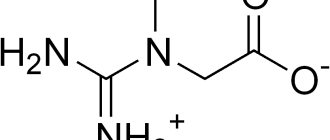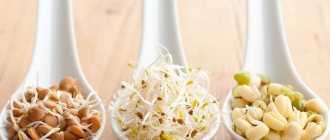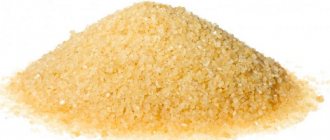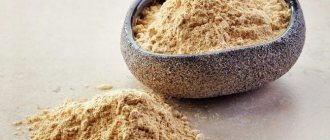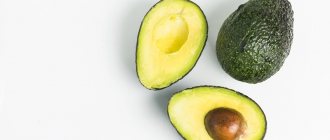What is casein
Translated from Latin, caseus means cheese, but we use the English version of pronunciation. Casein is a protein that, along with albumin and other types of animal proteins, is the main component of milk, where it is combined with calcium (calcium caseinate) and performs a storage function. Precipitation of casein, during which milk coagulates, occurs due to the action of enzymes of lactic acid bacteria, rennet enzymes, and acids. Casein is absorbed extremely slowly, and for this it needs the presence of a sufficient amount of pepsin in gastric juice.
This complex protein containing a phosphate group, which experts often call caseinogen, is produced in the mammary glands of female mammals from free essential amino acids in the blood. Caseins differ from each other in the combination, quantitative and qualitative content of polypeptide chains of amino acids - fractions α, β and γ, and each of them also has varieties. Casein breaks down when heated to 130 ℃.
Casein-based supplements
Casein's ability to quickly gel and thicken makes it a unique ingredient for making a variety of sports supplements. Once in the digestive system, casein coagulates under the influence of gastric juice. Its absorption slows down, which ensures a uniform and continuous release of casein amino acids. (Amino acids are the building blocks of protein.)
Simply put, this means that the muscles are “recharged” over a long period of time.
The low rate of digestion has another advantage - the rate of protein breakdown and amino acid oxidation (consumption of amino acids as an energy source) is reduced. Casein gives you a feeling of fullness. You will feel like you are about to eat a big meal.
Where is casein found?
Casein is found only in milk and dairy products. Let us list in what % of the total volume and in which products casein is contained:
- 1.9–2.3% - sheep, mare, donkey milk;
- 2.8–3.5% - goat and cow milk;
- 13–15% - cottage cheese, soft and unripe cheeses;
- 18% - hard aged cheeses.
Let us separately clarify that the % of the specific gravity of casein in fermented milk products coincides with the % of the milk from which they are made. For example, in kefir, which is made from cow's milk with 2.5% fat content, the casein content will be 3%.
There are 2 types of casein - technical and food. Technical casein was the first to be isolated. In 1892, casein glue began to be produced in Switzerland and Germany. Today, technical types of casein are also used in other building materials and paints, in the production of cardboard and coated paper, during the hardening of natural leather, to stabilize rubber, and in the production of artificial wool and silk. This animal protein can also be found in cosmetics and hair care products, soaps and dishwashing detergents.
Dietary casein can be found in foods such as:
- baby formula;
- modified dairy products;
- bakery products;
- breakfast cereals;
- marshmallows, candies such as toffee, caramel, nougat;
- carbonated sweet drinks, drinking chocolate;
- sauces;
- liqueurs.
Today, food casein is the basis for experimental imitations of chicken, beef, bacon and ham, and even fish. Separately, we highlight that casein is part of the space diet.
In recent years, preparations with casein have become especially popular among athletes, and are also included by doctors in various types of diets for adults and children, both for weight loss and weight gain. Casein-containing diets for children with autism are also being promoted.
Precautionary measures
Some people may develop an allergic reaction to casein protein. Side effects appear: upset stomach, pain, diarrhea, vomiting and/or other gastrointestinal problems.
In addition, consuming casein in large quantities can cause mild gastrointestinal upset even in people who are not prone to allergies. Casein thickens in the stomach. With large doses, this leads to bloating and unpleasant sensations - which others will certainly notice.
What is the moral? Casein should not be consumed by allergy sufferers (or by people who have been told not to take it by their doctor). Also, if you don't want to turn into the Marshmallow Man (from the movie "Ghostbusters"), you shouldn't ingest large quantities of casein.
Manufacturing technology
Modern technologies for the production of edible casein make it possible to obtain high-quality pure milk protein. In addition, 2 new production methods have appeared.
The first method allows the production of micellar casein. Using gentle microfiltration technology, as well as without the participation of acid and high temperatures in the process, it is possible to isolate caseinogen with an undisturbed molecular structure, qualitatively purified from lactose, carbohydrates, fats and other impurities. Unlike regular casein protein, micellar casein lasts not 6-8, but 12 hours, dissolves well in water and does not create a sticky consistency in the drink.
The second method allows you to obtain hydrolyzed casein. which also does not contain any foreign impurities. It is absorbed quickly and easily, since in the process of hydrolysis with water and special enzymes, protein molecules are broken down into separate short-chain amino acid bundles. Unfortunately, this innovative technology is still too expensive. Therefore, casein hydrolyzate is still added in small quantities to protein complexes, since it itself is too expensive.
Combination of casein with whey protein
As already mentioned, the maximum anabolic response of casein is less than that of whey. But it ensures the supply of amino acids to the body over a longer period of time. The combination of casein with a rapidly digestible protein (for example, whey) gives the maximum synergistic effect, i.e. a combination of the benefits of both types of protein. This way, you get a high concentration of leucine along with a constant supply of amino acids to your muscles.
Consumption of protein mixtures allows you to get the maximum benefit from casein and compensate for some of its shortcomings. Alternatively, you can combine casein with fast-absorbing branched chain amino acids (BCAAs) or free form leucine - the effect will be the same.
Benefits of casein
Let us list the beneficial properties of food casein:
- protecting muscles from destruction by long-term saturation of muscle cells with amino acids, during long breaks or food restrictions;
- appetite suppression;
- accelerating the growth of skeletal muscle cells;
- source of calcium and phosphorus.
We also note that unlike whey concentrates, which inevitably contain a lot of lactose, as well as egg proteins, casein intolerance and allergy are uncommon.
Is there any harm from consuming casein?
Disputes about the dangers of casein are based on the fact that when it is broken down in the stomach, casomorphin is formed - a short-chain peptide that has opioid properties and, most importantly, behaves as a histamine releaser. This means that the body starts producing histamines, which contribute to the occurrence of allergies or the intensification of the manifestations of existing allergic reactions. It is especially emphasized that casomorphin dipeptides can remain in an inactive state for a long time in the intestines and in the cells of the endocrine glands.
In addition, there are authoritative studies that confirm the connection of large doses of some of the β-casomorphins obtained as a result of the digestion of some of the β-caseins of cow's milk with the causes of the development of atherosclerosis, hypertension, and type 2 diabetes. Hypotheses are being considered that casein deficiency may be a risk factor for autism and schizophrenia.
However, if you follow the dosages specified in the instructions for each casein product and follow the physical regimen recommended by a fitness trainer or attending physician, it is impossible to cause harm to your health.
Are there any contraindications for use and side effects?
Naturally, those who have an individual intolerance to casein do not need to take casein-containing products and sports nutrition preparations. Its symptoms after taking the drug with casein are redness of the face and décolleté, difficulty breathing, hives, nausea, abdominal pain, and upset stool. They can appear individually, in different combinations, or all together.
Contraindications to taking casein:
- pregnancy;
- lactation period;
- age up to 18 years and after 70 years;
- chronic stomach diseases.
If there are problems with the liver and kidneys, the dosage of casein intake is adjusted by the doctor.
Sports nutrition preparations with casein may cause side effects. Possible nausea, vomiting, abdominal pain, flatulence, diarrhea or constipation. If these symptoms occur, stop taking it for a few days and then start again, but with smaller doses.
Comparison of casein and whey
Compared to whey protein, casein is a double-edged sword. Its advantages include the fact that the slow absorption of casein extends both the supply of amino acids to muscle tissue and the presence of a positive nitrogen balance in the body. (A positive nitrogen balance is the basis for muscle growth.)
However, the slow release of amino acids from casein leads to a decrease in the maximum anabolic response in the body. In other words, casein does not stimulate muscle protein synthesis as effectively as whey. If you compare casein gram for gram with whey, then due to slow absorption it has less anabolic properties (worse growth of muscle mass).
Moreover, casein protein contains less leucine (8%) compared to whey (11%). Leucine is an amino acid responsible for the maximum anabolic response after protein intake. Essentially, leucine signals the body about the need for protein synthesis and muscle hypertrophy.
While writing my PhD thesis, I discovered that the anabolic response to food is closely related to its leucine content. Casein has less anabolic properties compared to whey due to its lower leucine content.
How to take casein
Usual drink.
Close up of a pleasant strong man holding a scoop with protein powder and making a drink The attending physician should tell non-athletes exactly how much and which drugs with casein protein to take. It will take into account the purpose of admission, age, weight and height, body type and metabolism, the presence of diseases, the prescribed diet and physical activity. But there is a general recommendation for everyone - you need to take casein at night.
Features of the use of casein for athletes
In sports practice, as well as in bodybuilding, the use of casein has become widespread due to the following beneficial effects:
- maintaining muscle strength and volume during drying or during weight loss;
- promoting the growth of muscle volume when gaining weight or working on relief;
- appetite suppression;
- promoting the burning of subcutaneous fat reserves;
- normalization of the small and large intestines, their microflora, and therefore strengthening of general immunity.
Another argument in favor of using casein protein is the highest quality of this phosphoprotein, which sets it apart from other proteins of both animal and plant origin.
How is casein taken by athletes? It depends on the purpose pursued and the type of drug:
- To increase muscle mass or while working on relief, slowly absorbing forms are taken once at night - either casein protein or micellar casein. Night protein provides muscles with amino acids, and gives them the opportunity not only to recover, but also to increase strength and volume.
- Casein for weight loss or cutting is taken in the morning or immediately before a long period of abstinence from food. It suppresses appetite and improves the “well-being” of the intestinal microbiota, even in the absence of food.
The recommended standard dose of casein protein or micellar casein for gaining muscle mass is 30 g, and during the drying period, working on relief or when losing weight - 15 g.
Remember your goals
According to experienced athletes, casein can help solve various problems. At the same time, the nuances of its administration may vary (depending on the goals set). Here it is worth highlighting the following areas:
- Gaining muscle mass. If you set yourself the goal of increasing muscle gain and adding intensity to the training process, then it is advisable to consume a casein shake before going to bed. The dosage in this case should be about 30 grams of product per 220-250 g of water or milk. In addition to the “nightly” dose, it is advisable to take the supplement between main meals. But that's not all. You can increase the effectiveness of your training by taking casein 1-2 hours before the start of training (we have already mentioned this above). Many beginners make the mistake of taking casein protein immediately after finishing their workouts. It is not right. The main disadvantage of casein is the slow rate of absorption and an extremely “inhibited” response from intake. Therefore, immediately after receiving loads, it is better to give preference to faster proteins, for example, the same bcaa, hydrolysates or whey protein isolates. Only after a few hours can you drink casein.
- Losing weight. Casein is often recommended as one of the most effective means of reducing body fat. This is true, but the approach taken will vary greatly. In particular, for high-quality development of relief or weight loss, it is enough to take the supplement only twice a day. One dose should be between meals, and the second before going to bed. The best dosage in this case is 33-35 grams. The volume of liquid (milk or water) is 220-250 grams. Please note that when mixing casein powder with milk, the total calorie content of the shake will increase.
World brands producing the best casein
As a conclusion, here are the TOP 4 best sports nutrition brands that produce the highest quality casein:
- Optimum Nutrition, USA - 100% GOLD STANDARD CASEIN;
- Quamtrax, Spain - MICELLAR CASEIN;
- Rule 1, USA - RULE 1 CASEIN;
- Scitec Nutrition, Hungary - 100% CASEIN COMPLEX.
When shopping in our online store, you don’t have to worry about the quality of the goods and the possibility of purchasing a fake. We work with the world's best sports nutrition manufacturers, without intermediaries, and are official representatives of their brands in Ukraine.
